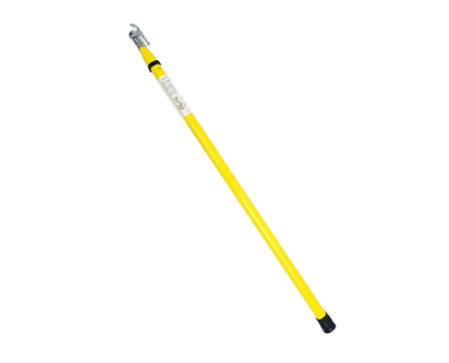
-
 Afrikaans
Afrikaans -
 Albanian
Albanian -
 Amharic
Amharic -
 Arabic
Arabic -
 Armenian
Armenian -
 Azerbaijani
Azerbaijani -
 Basque
Basque -
 Belarusian
Belarusian -
 Bengali
Bengali -
 Bosnian
Bosnian -
 Bulgarian
Bulgarian -
 Catalan
Catalan -
 Cebuano
Cebuano -
 Corsican
Corsican -
 Croatian
Croatian -
 Czech
Czech -
 Danish
Danish -
 Dutch
Dutch -
 English
English -
 Esperanto
Esperanto -
 Estonian
Estonian -
 Finnish
Finnish -
 French
French -
 Frisian
Frisian -
 Galician
Galician -
 Georgian
Georgian -
 German
German -
 Greek
Greek -
 Gujarati
Gujarati -
 Haitian Creole
Haitian Creole -
 hausa
hausa -
 hawaiian
hawaiian -
 Hebrew
Hebrew -
 Hindi
Hindi -
 Miao
Miao -
 Hungarian
Hungarian -
 Icelandic
Icelandic -
 igbo
igbo -
 Indonesian
Indonesian -
 irish
irish -
 Italian
Italian -
 Japanese
Japanese -
 Javanese
Javanese -
 Kannada
Kannada -
 kazakh
kazakh -
 Khmer
Khmer -
 Rwandese
Rwandese -
 Korean
Korean -
 Kurdish
Kurdish -
 Kyrgyz
Kyrgyz -
 Lao
Lao -
 Latin
Latin -
 Latvian
Latvian -
 Lithuanian
Lithuanian -
 Luxembourgish
Luxembourgish -
 Macedonian
Macedonian -
 Malgashi
Malgashi -
 Malay
Malay -
 Malayalam
Malayalam -
 Maltese
Maltese -
 Maori
Maori -
 Marathi
Marathi -
 Mongolian
Mongolian -
 Myanmar
Myanmar -
 Nepali
Nepali -
 Norwegian
Norwegian -
 Norwegian
Norwegian -
 Occitan
Occitan -
 Pashto
Pashto -
 Persian
Persian -
 Polish
Polish -
 Portuguese
Portuguese -
 Punjabi
Punjabi -
 Romanian
Romanian -
 Russian
Russian -
 Samoan
Samoan -
 Scottish Gaelic
Scottish Gaelic -
 Serbian
Serbian -
 Sesotho
Sesotho -
 Shona
Shona -
 Sindhi
Sindhi -
 Sinhala
Sinhala -
 Slovak
Slovak -
 Slovenian
Slovenian -
 Somali
Somali -
 Spanish
Spanish -
 Sundanese
Sundanese -
 Swahili
Swahili -
 Swedish
Swedish -
 Tagalog
Tagalog -
 Tajik
Tajik -
 Tamil
Tamil -
 Tatar
Tatar -
 Telugu
Telugu -
 Thai
Thai -
 Turkish
Turkish -
 Turkmen
Turkmen -
 Ukrainian
Ukrainian -
 Urdu
Urdu -
 Uighur
Uighur -
 Uzbek
Uzbek -
 Vietnamese
Vietnamese -
 Welsh
Welsh -
 Bantu
Bantu -
 Yiddish
Yiddish -
 Yoruba
Yoruba -
 Zulu
Zulu


Nov . 09, 2024 06:31 Back to list
Efficient Hoisting Solutions for Heavy-Duty Winch Applications in Various Industries
Understanding Hoist Winches Essential Tools for Lifting and Moving Heavy Loads
In various industries, the need to lift and move heavy objects is a common task that often requires specialized equipment. One of the most effective tools for this purpose is the hoist winch. As a mechanical device designed to lift or lower heavy loads, hoist winches have become indispensable in construction, manufacturing, and shipping industries.
What is a Hoist Winch?
A hoist winch is a device that utilizes a drum or a lifting wheel to wind up a rope or cable. The mechanism is powered either manually, electrically, or hydraulically, depending on its design and intended use. Hoist winches come in various sizes and capacities, making them suitable for a wide range of lifting tasks—from small equipment to massive industrial components.
Types of Hoist Winches
Hoist winches can typically be classified into several categories
1. Manual Hoist Winches These winches are operated using a hand crank. They are typically used for lighter loads and in situations where electrical power is not available. Manual hoist winches are portable and often preferred for smaller tasks.
2. Electric Hoist Winches Driven by electric motors, these winches are capable of lifting heavier loads with greater efficiency. Electric hoist winches often come with advanced features such as remote control and safety mechanisms to prevent accidents.
3. Hydraulic Hoist Winches These winches use hydraulic power to lift heavy loads and are often used in construction and heavy industrial applications. They provide the advantage of high lifting power and can handle the most challenging lifting tasks.
Key Components of a Hoist Winch
A typical hoist winch consists of several critical components
- Drum The cylindrical component around which the cable is wound. - Motor Provides the driving force for electric and hydraulic winches. - Cable or Rope The lifting medium, which is wound around the drum and attached to the load. - Gearbox Transfers power from the motor to the drum, allowing for a mechanical advantage in lifting. - Brake System Ensures that the load remains stationary when not in motion, preventing accidental drops.
hoist winch

Applications of Hoist Winches
Hoist winches find their applications in various sectors
1. Construction During the construction of tall buildings, hoist winches are used to lift materials such as steel beams and concrete blocks to higher levels.
2. Manufacturing In factories, hoist winches help assemble large machinery by positioning heavy parts with precision.
3. Shipping and Logistics Port operations utilize hoist winches to load and unload containers from ships, ensuring efficient material handling.
4. Entertainment In the film and theater industry, hoist winches are employed to lift sets and lighting equipment, contributing to elaborate staging and productions.
Safety Considerations
While hoist winches are incredibly useful, they pose certain safety risks if not used correctly. Operators must be properly trained to handle the equipment. Key safety measures include
- Regular maintenance and inspection of the winch and its components. - Ensuring that the load does not exceed the winch's rated capacity. - Using appropriate safety gear and following industry safety standards.
Conclusion
Hoist winches are vital tools that enable the efficient and safe lifting of heavy loads across various industries. With advancements in technology, these devices continue to evolve, offering enhanced performance and safety features. From construction sites to entertainment venues, hoist winches have proven themselves indispensable in modern operations, highlighting their importance in effectively managing heavy lifting tasks. As industries continue to grow and evolve, the role of hoist winches will remain critical in facilitating safe and efficient workflows.
Latest news
What Are Construction Tools and How Are They Used?
NewsJul.11,2025
Professional-Grade Duct Rodding Tools for Superior Cable Installation
NewsJul.11,2025
Enhancing Safety and Efficiency with Modern Hot Stick Solutions
NewsJul.11,2025
Empowering Cable Installation with Advanced Rodder Solutions
NewsJul.11,2025
Elevate Your Cable Installation Projects with Cable Pulling Tools
NewsJul.11,2025
Efficient Cable Handling Solutions: Cable Rollers for Sale
NewsJul.11,2025











